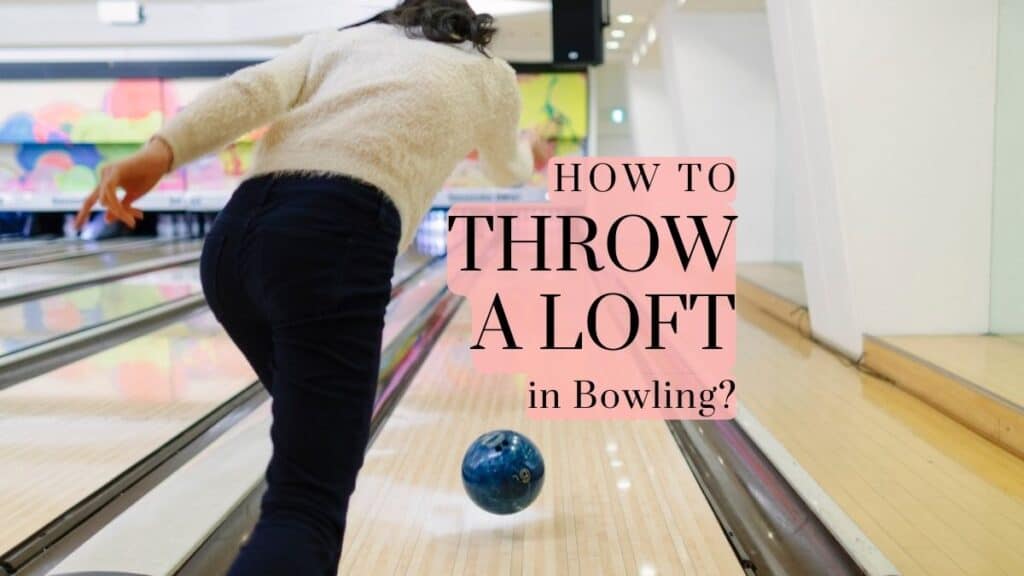Bowlers often use different ways to change the ball’s reaction depending on the lane conditions. The most common way is by using a different type of ball with a more polished surface. Another way is to change the way the ball is thrown.
Just like the speed of the ball and its axis rotation and tilt can be changed, the bowler can also manipulate its loft. However, not everyone knows how to throw a loft properly.
Lofting a bowling ball refers to a shot that is either longer or shorter than a regular delivery. This delays the ball’s reaction when lane conditions are dry. However, a bowler may decide to loft the ball before or after the target arrows.
Lofting allows the bowler to preserve energy in the ball to start to hook closer to the pocket and reach its aim. This technique can lead to better scores; therefore, it’s a good idea to learn how to throw a loft.
However, some people also think lofting can damage the ball or the lane, so it shouldn’t be practiced. Let’s find out how exactly a loft is thrown, when is the right time to throw a loft, and does lofting damage the ball.

The Proper Way to Loft the Bowling Ball
Lofting may seem like a simple technique, but it’s a skill that you can only learn with practice and experience. Beginner bowlers need to be aware that the ball may go up instead of out on the lane, which can lead to undesirable consequences.
So, it’s important to know the proper way to loft the bowling ball. And this is what we are going to discuss here.
The first step is to make sure you stay taller with less knee bend and have an extra foot of projection. Next, you need to ensure that your throwing angle is appropriate. So, the key is to land right about at the dots on your first step and then throw the ball straight out and then down.
When you’re trying to loft a ball, you need to make sure there is very little upward motion. The goal is to get the ball past the dry patch and preserve its energy later. To throw a proper loft, you will need to keep away from the line and maintain a stable posture.
A loft is not supposed to change or affect your release point. However, when throwing a loft, you will be releasing the ball from a slightly higher point since your knees are not bent as they normally would.
When to Loft a Bowling Ball?
If you imagine lofting as something that shortens or lengthens the lane, you would want to practice it when the ball starts to hook earlier or later than you want it to. Another good time to loft a bowling ball is when the front of the lane seems too dry and starts to break.
Lofting is also beneficial when there is a broken-down oil pattern on the lane. In such a case, the bowler has to hook almost the entire lane, and there is no other way to achieve this other than lofting the ball.
But how would you know if the lane is oily or dry? One way to check this is to start on the center dot and see where the ball goes if you throw it straight. If it takes off too much to the left, it indicates a dry lane. And if you see that your ball is not hooking, it means the lane is oily, and you need to adjust more to the right.
A bowler may also decide to loft the ball to change the shape of the hook. Pro bowlers commonly loft their ball three or four feet to see a significant impact on the ball’s reaction.
Forms of Loft in Bowling
There are two ways to practice a loft in bowling. These are called the hand loft and the projection loft. Hand loft involves releasing the ball a little later than you normally would. Since the ball is still in your hand while deciding when to release it, it is termed hand loft.
Hand loft is usually practiced to avoid a gutter ball. Bowlers use this technique to release the ball on the upswing instead of the downswing by holding it a little longer than usual. This helps to achieve the correct launch angle.
Projection loft refers to a delivery in which you use your height to manipulate its reaction on the lane. When you want to delay the ball’s reaction, you will release it from a slightly higher-than-normal height.
While projection loft has been seen to be a more useful tool since it can be used from any angle, it is recommended to master both techniques.
Does Lofting Damage the Ball?
While some bowling alleys will discourage bowlers from practicing lofting, the truth is that this technique does not damage the lane or the ball.
After all, you’re not trying to make the ball jump 20 feet down the lane at an altitude that can be dangerous. It is a technique that allows you a split second to release the ball so it hooks at the right time.
Having said that, some people do believe that lofting can cause damage to wooden lanes. Because of this, some bowling alleys will give warning signs for bowlers not to loft the ball. Since wood is soft, it can be dented by a lofted ball.
Wooden lanes are prone to wear and tear even when the bowlers simply roll the ball onto the lane instead of throwing it. The lane will nevertheless experience little dents over time whether or not the bowlers are throwing loft balls.
However, if you’re bowling on a synthetic lane, it’s perfectly fine to loft the ball as and when you desire. Excessive lofting may not seem like a good idea anyway, especially if there are bowlers of all skill levels playing.




